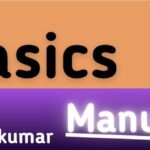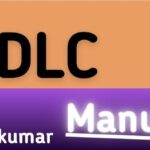
Let’s go deeper into the core concepts of Manual Testing so you can build a strong foundation.
📌 Manual Testing Concepts
1. Software Testing Basics
- Definition: The process of evaluating software to ensure it meets requirements and works correctly.
- Goal: Find defects and improve quality.
- Testing vs Debugging:
- Testing = Finding defects.
- Debugging = Fixing defects.
2. Verification vs Validation
- Verification → “Are we building the product right?” (checking documents, design, code).
- Validation → “Are we building the right product?” (checking actual software).
3. SDLC & STLC
- SDLC (Software Development Life Cycle) → Phases of software development (Requirement → Design → Coding → Testing → Deployment → Maintenance).
- STLC (Software Testing Life Cycle) → Phases of testing within SDLC:
- Requirement Analysis
- Test Planning
- Test Case Design
- Test Environment Setup
- Test Execution
- Defect Reporting
- Test Closure
4. Types of Testing
A. Based on Knowledge
- Black Box Testing → Focus on inputs/outputs (no knowledge of code).
- White Box Testing → Test internal logic and code paths.
- Gray Box Testing → Partial knowledge of code.
B. Based on Purpose
- Functional Testing → Does the software do what it should?
- Non-Functional Testing → Performance, load, security, usability.
5. Levels of Testing
- Unit Testing → Smallest part (function/module).
- Integration Testing → Interaction between modules.
- System Testing → Full application as a whole.
- User Acceptance Testing (UAT) → Tested by client/end users.
6. Test Case & Test Scenario
- Test Case = Step-by-step instructions with input, action, and expected result.
- Test Scenario = High-level idea of what to test (broader than test case).
👉 Example:
- Scenario: Verify login functionality.
- Test Case: Enter valid username/password → Click login → User should land on dashboard.
7. Defect / Bug
- Defect/Bug → A mismatch between expected and actual result.
- Bug Life Cycle (Status Flow):
New → Assigned → Open → Fixed → Retested → Closed/Rejected/Deferred
8. Testing Techniques
- Equivalence Partitioning (EP) → Divide inputs into valid/invalid groups.
- Boundary Value Analysis (BVA) → Test at boundaries (e.g., age input: 17, 18, 100, 101).
- Error Guessing → Tester uses experience to find defects.
9. Regression vs Retesting
- Retesting → Testing the same defect after it is fixed.
- Regression Testing → Checking that fixing one bug didn’t break other areas.
10. Entry & Exit Criteria
- Entry Criteria → Conditions before testing starts (requirements ready, environment setup).
- Exit Criteria → Conditions to stop testing (all planned tests executed, major bugs fixed).
11. Manual Testing Tools (Supporting, not automation)
- Bug Tracking Tools → JIRA, Bugzilla, Mantis.
- Test Management Tools → TestRail, Quality Center, Zephyr.
✅ In Summary:
Manual Testing concepts cover STLC, levels of testing, test case design, bug life cycle, verification vs validation, regression vs retesting, and test techniques.






